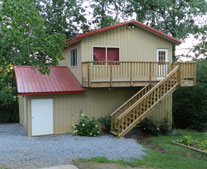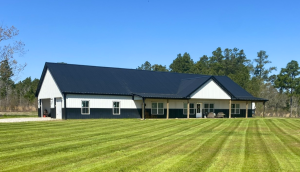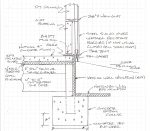More buildings fail due to high winds, than high snows. To assist in avoiding new buildings meeting a similar fate as the straw house in “The Three Little Pigs”, the Applied Technology Council (ATC) offers a free web-based tool which finds location-specific wind speed using the GPS coordinate system.
This utility interpolates wind speeds to the nearest mile per hour based on the wind contours on the map using Google Maps as the platform. Specific sites can be located by using street maps or satellite images. Wind speeds are provided in 3-second-peak gust speeds for the three Risk Category maps provided in ASCE (American Society of Civil Engineers) 7-10 and for 10, 25, 50 and 100-year return periods. Access this free tool at www.atcouncil.org/windspeed.
The International Building Code design wind speeds are based upon 50-year return periods, and utilize the latest ASCE 7 requirements and wind speed maps.
 The purpose of the “Wind Speed Web Site” is to provide users with a site specific wind speed using the GPS coordinate system. The reason this utility is needed is the spatial resolution of the wind speed maps displayed in ASCE 7 are not sufficient to determine a site specific wind speed. There are no reference city or town locations on the ASCE 7 maps and while county boundaries are shown, the resolution is affected when the maps are expanded large enough to distinguish the boundaries and approximate the city locations.
The purpose of the “Wind Speed Web Site” is to provide users with a site specific wind speed using the GPS coordinate system. The reason this utility is needed is the spatial resolution of the wind speed maps displayed in ASCE 7 are not sufficient to determine a site specific wind speed. There are no reference city or town locations on the ASCE 7 maps and while county boundaries are shown, the resolution is affected when the maps are expanded large enough to distinguish the boundaries and approximate the city locations.
I, of course, had to just try it myself, so I entered my street address and clicked on the FIND radio button. This results in the latitude and Longitude of my address being displayed. Clicking on the FIND WINDSPEED radio button, gave me the wind information specific to my home. The 50 year MRI (mean recurrence interval) wind speed was 85 mph (miles per hour), which matches the code requirements in my area.
And, thanks to a very litigious population in the United States, use of the website information comes with a disclaimer:
“While the information presented on this web site is believed to be correct, ATC assumes no responsibility or liability for its accuracy. The material presented in the wind speed report should not be used or relied upon for any specific application without competent examination and verification of its accuracy, suitability and applicability by engineers or other licensed professionals. ATC does not intend that the use of this information replace the sound judgment of such competent professionals, having experience and knowledge in the field of practice, nor to substitute for the standard of care required of such professionals in interpreting and applying the results of the wind speed report provided by this web site. Users of the information from this web site assume all liability arising from such use. Use of the output of this web site does not imply approval by the governing building code bodies responsible for building code approval and interpretation for the building site(s) described by latitude/longitude location in the wind speed report.”
Certainly, having the ability to access this information will bring a higher degree of accuracy to designing buildings appropriately for prevention of failures due to wind. Especially important, will be to new building owners in areas which do not require Building Permits. There will be cases where the website and a Building Department will disagree on design wind speeds. Here, err on the side of caution, and design to the higher speed. I still think this is a pretty cool website.










Dear Sir,
I’m working in areas where wind maps are not available and a WindFinder app has been developed to solve the problem. It seems it works well in also developed countries, as it uses the closest weather station as data source. If fetches the last 25 years wind data and makes the extreme-value analysis. There is a user interface and also an API for programmatic access. https://www.towerup.com/wind/index
The API can be found here: https://windfinder.docs.apiary.io/#
You are more then welcome to try it out as beta user, and please share your opinion about it.
Best regards